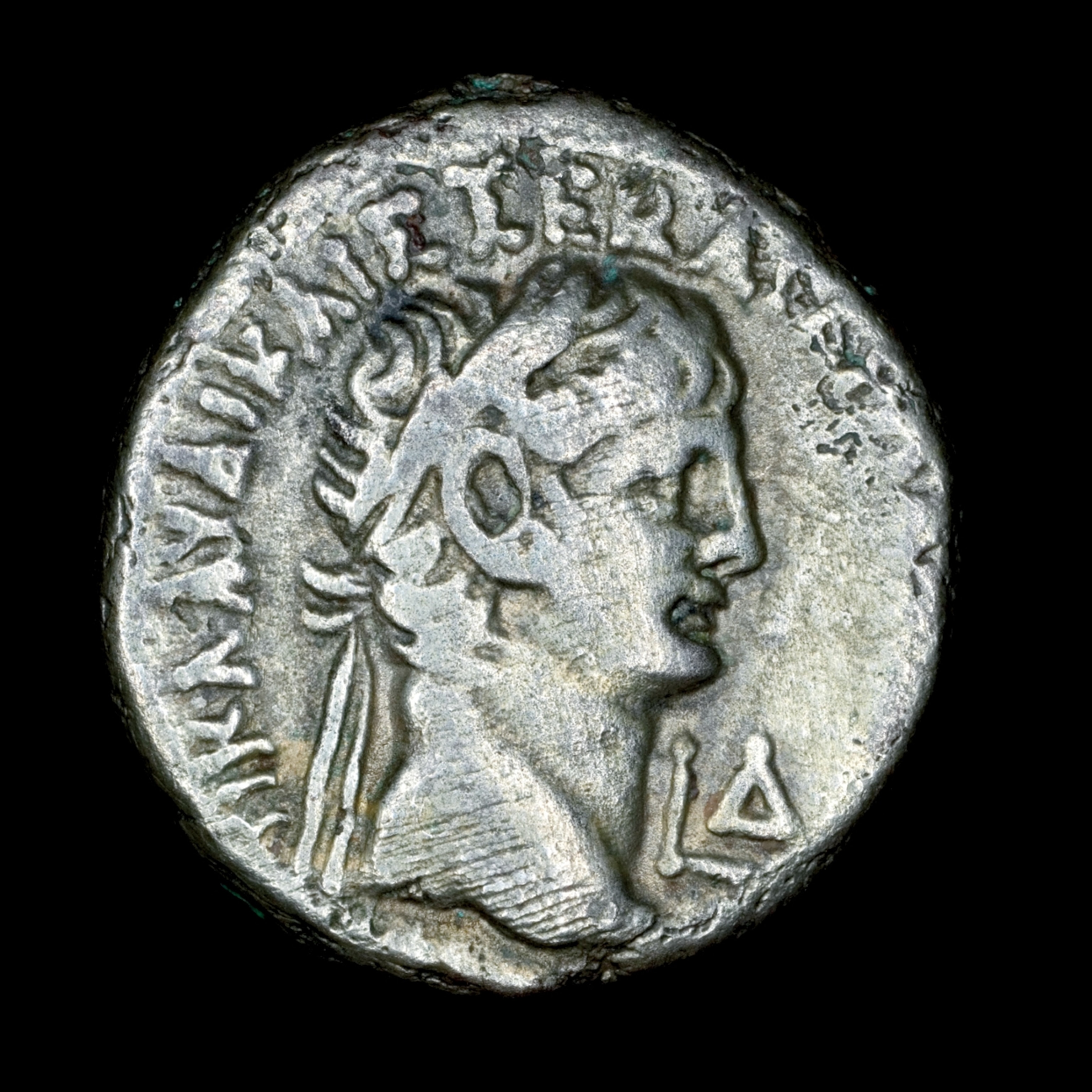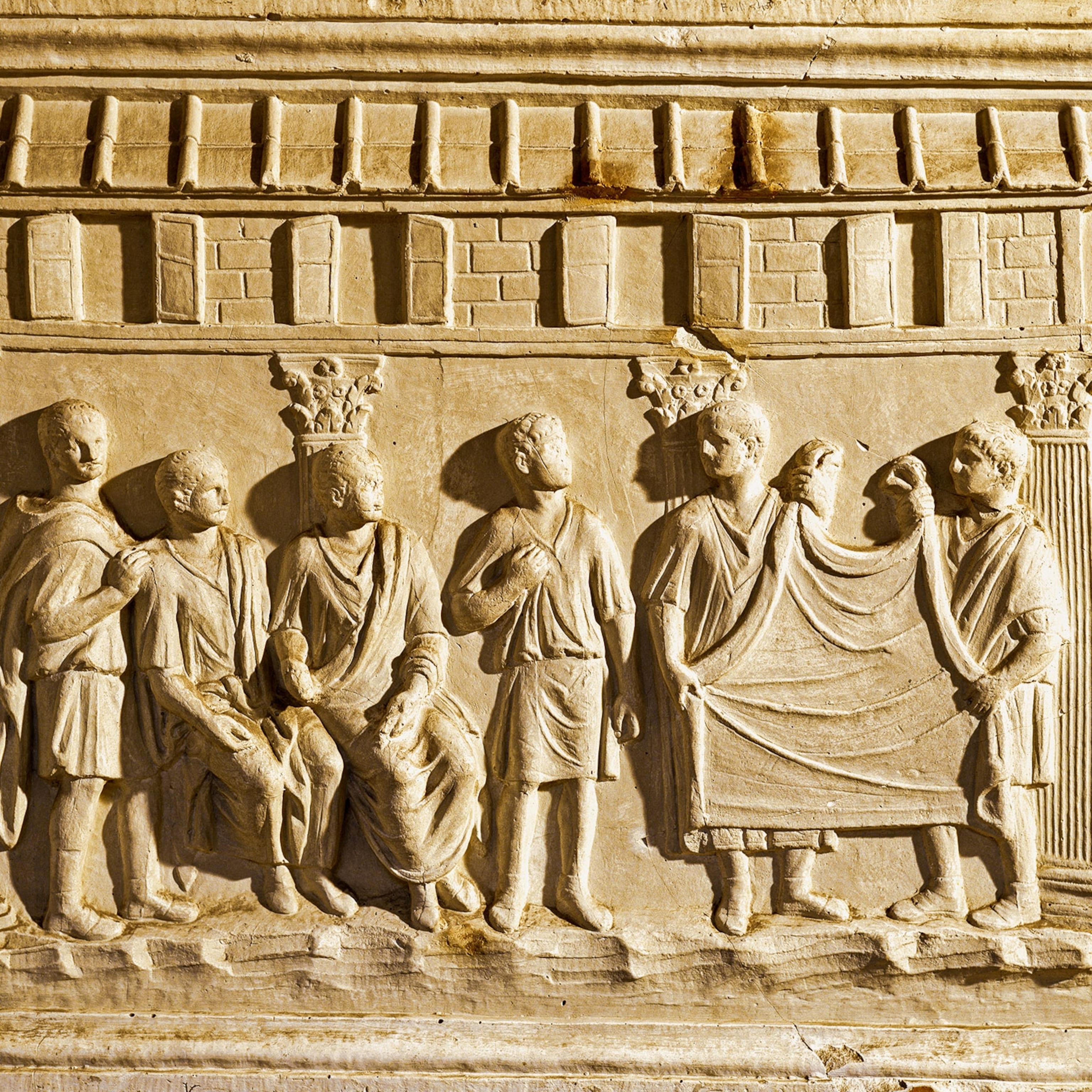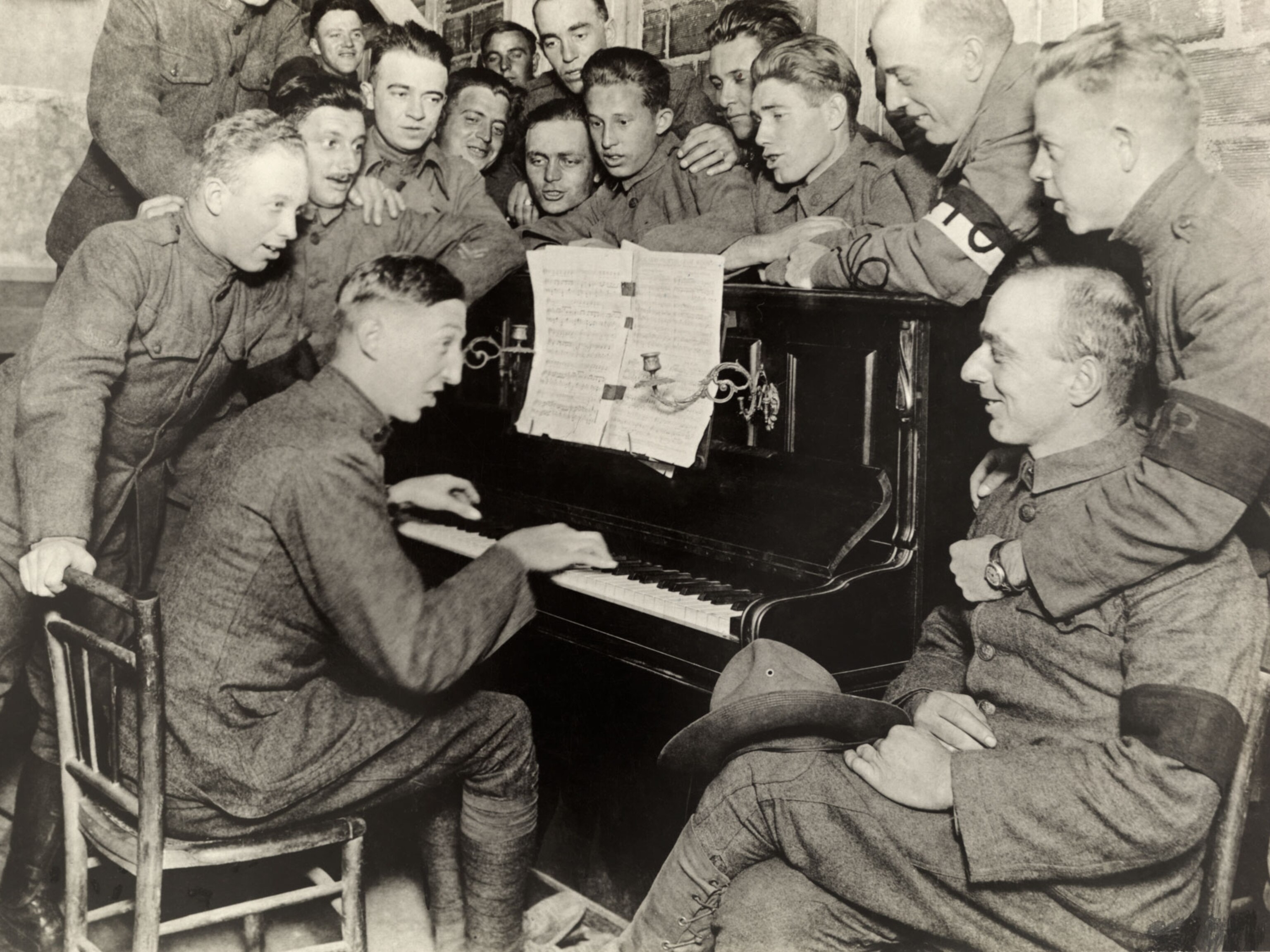Barbarians and Rome's legions battled along the Danube for 400 years
Fortified by forts and watchtowers, the 1,700-mile river formed the empire's northern border, with Rome on one side and Germanic tribes on the other.

Flowing out of the Black Forest in Germany across Europe, the Danube runs for more than 1,700 miles before it meets the Black Sea. This river, Europe’s second longest, shaped the history of the continent as much as it shaped the landscape. The Danube created a natural border, and the rulers of Rome, starting with the first emperor, Augustus, used it to mark the place where Rome ended and the frontier began.
On one side of the river dwelled Romans, on the other were barbarians. Roman writers did not differentiate among the Germanic tribes who lived north of the Danube. Their culture and practices were of no interest to Rome. All Rome wanted to do was keep the barbarians out as it turned its attentions to expanding and maintaining its empire.

Barbarian identity
Barbarians were not one large group of people. They were many different cultures with differing ethnicities and origins from all over Europe and Asia. The nomadic Huns most likely came from the area around Kazakhstan, the Vandals from Poland and Scandinavia, and the Picts from Britain, while the Sarmatians migrated westward from Iran.
The image of a “barbarian” as a hairy wild-eyed man communicating with grunts and shouts comes from ancient Greece. The Greek word barbaros was used to describe non-Greeks whose language was incomprehensible, sounding like “bar, bar, bar.” Later Roman writers adopted the term and used it to mean “other,” applied to both non-Romans and uncivilized people.
To Roman writers, barbarians epitomized a lack of discipline, a quality Roman warriors were trained to value and employ. In his first-century A.D. work Germania, the historian Tacitus wrote: “A German is not so easily prevailed upon to plough the land and wait patiently for harvest as to challenge a foe and earn wounds for his reward. He thinks it tame and spiritless to accumulate slowly by the sweat of his brow what can be got quickly by the loss of a little blood.” In short, Tacitus believed a barbarian would rather steal and kill for his necessities than make them himself. (Discover Tacitus's account of the rebel queen who challeneged the Roman Empire.)
The Germanic tribes that lived along the Danube were not monolithic. They were numerous and distinctive. Some were more powerful than others, such as Marcomanni, the Quadi and Cherusci. Most used Germanic languages that probably differed (historians have found no written records from these cultures). They practiced different faiths. They had different motives for interacting with the Romans: Some sought trade, while others formed alliances. Some sought conflict with Rome, while others may have preferred no interaction at all.
The Germanic tribes fought with each other just as easily as they fought with Rome. The Cherusci leader Arminius in A.D. 9, sought a pact with the king of the Marcomanni to launch a joint attack against the empire. He turned him down, and eight years later, in A.D. 17, Arminius attacked and defeated the Marcomanni instead, sending their king to exile in Italy.
United efforts
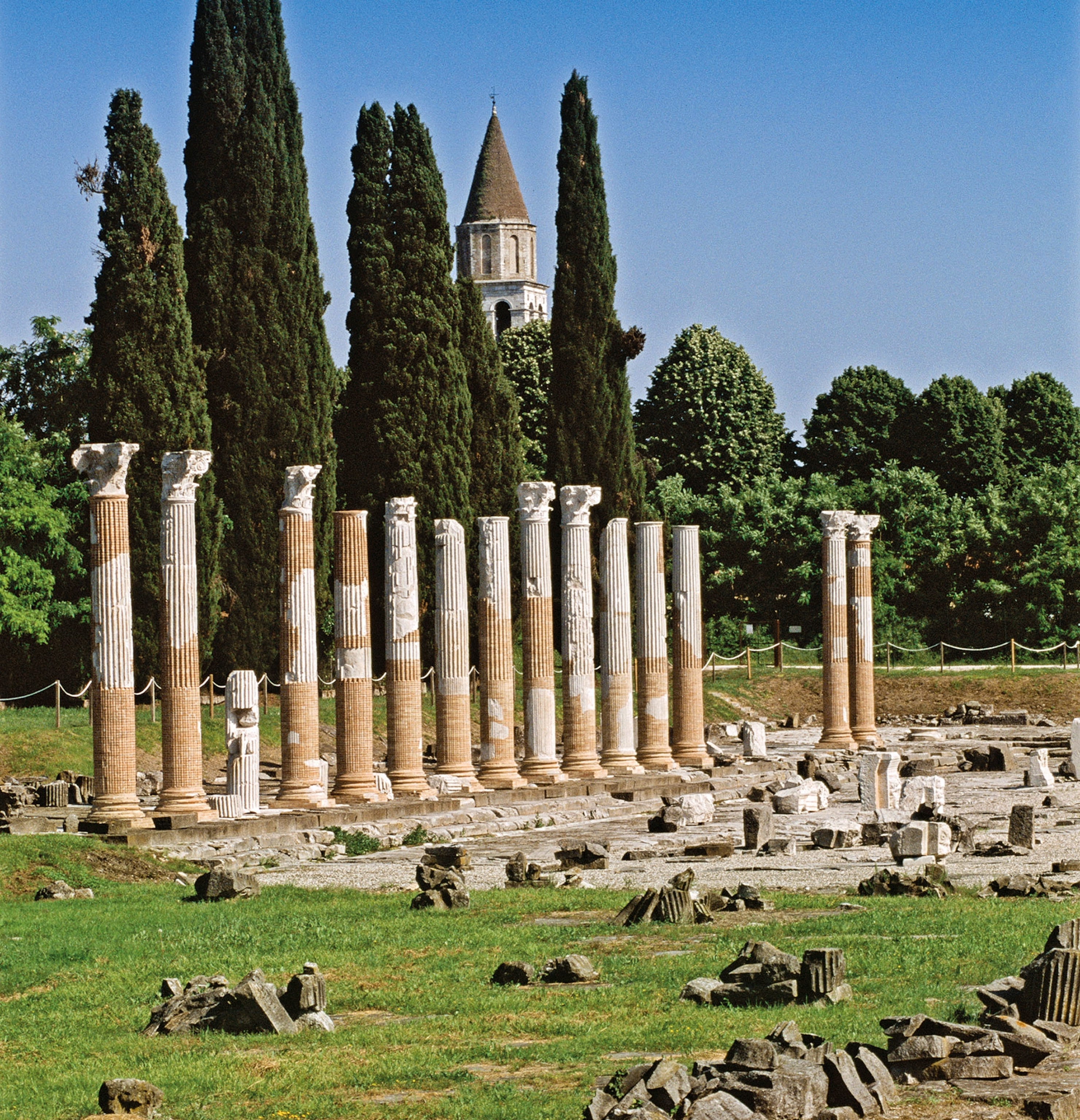
Barbarian forces were a constant threat to Rome despite successes patrolling the Danube. In A.D. 167 a consortium of Marcomanni, Quadi, and other Germanic tribes ransacked the prosperous town of Opitergium (modern Oderzo, Italy) and defeated the Roman troops sent to stop them. Then they marched against Aquileia, but lacking siege equipment, could not get past its walls. Emperor Marcus Aurelius fought barbarians repeatedly over the next decade, culminating in a major victory in A.D. 179, a year before his death.
Augustus on the frontier
Under the republic, Rome expanded into new territories and acquired new provinces—first in Italy, then in North Africa, across southern Europe, and into the Middle East. When Augustus became the first emperor of Rome in 27 B.C., he saw that protecting these territories was essential to maintaining Rome’s power. Augustus developed a new strategy to define and defend the borders of the empire. (Read how Rome's border walls were the beginning of the end for the empire.)
When it came to frontier defense, the emperor’s priority was the Italian Peninsula’s northern border. Germanic tribes migrating into what is now southern Germany and Austria had been boldly launching raids on frontier settlements, sometimes striking inside the peninsula itself. Until then, Roman expansion had been mostly by sea toward the west, south, and east, leaving the mainland of Europe relatively neglected and vulnerable to attack.

Augustus brought in more troops, launching them against the barbarians in a campaign to subdue the region and establish a defensible border farther north. With the campaign going well, he pushed the legionaries beyond the Danube River, setting his sights on reaching the Elbe River farther north and east. In A.D. 9 three crack legions (some 15,000 soldiers) led by general Varus were ambushed and annihilated by barbarian soldiers in the Battle of the Teutoburg Forest.
For Augustus and his successors, the defeat at Teutoburg—one of the empire’s worst—made it clear that the Germanic tribes were a formidable foe. The Romans withdrew to the south, and Augustus set a fixed northern border along the banks of the Danube. From then, Roman strategy to the north shifted to defending the frontier more than expanding the empire. Together with the Rhine to the east, the Danube would remain a boundary of imperial Europe for more than four centuries.
Patrolling the Danube
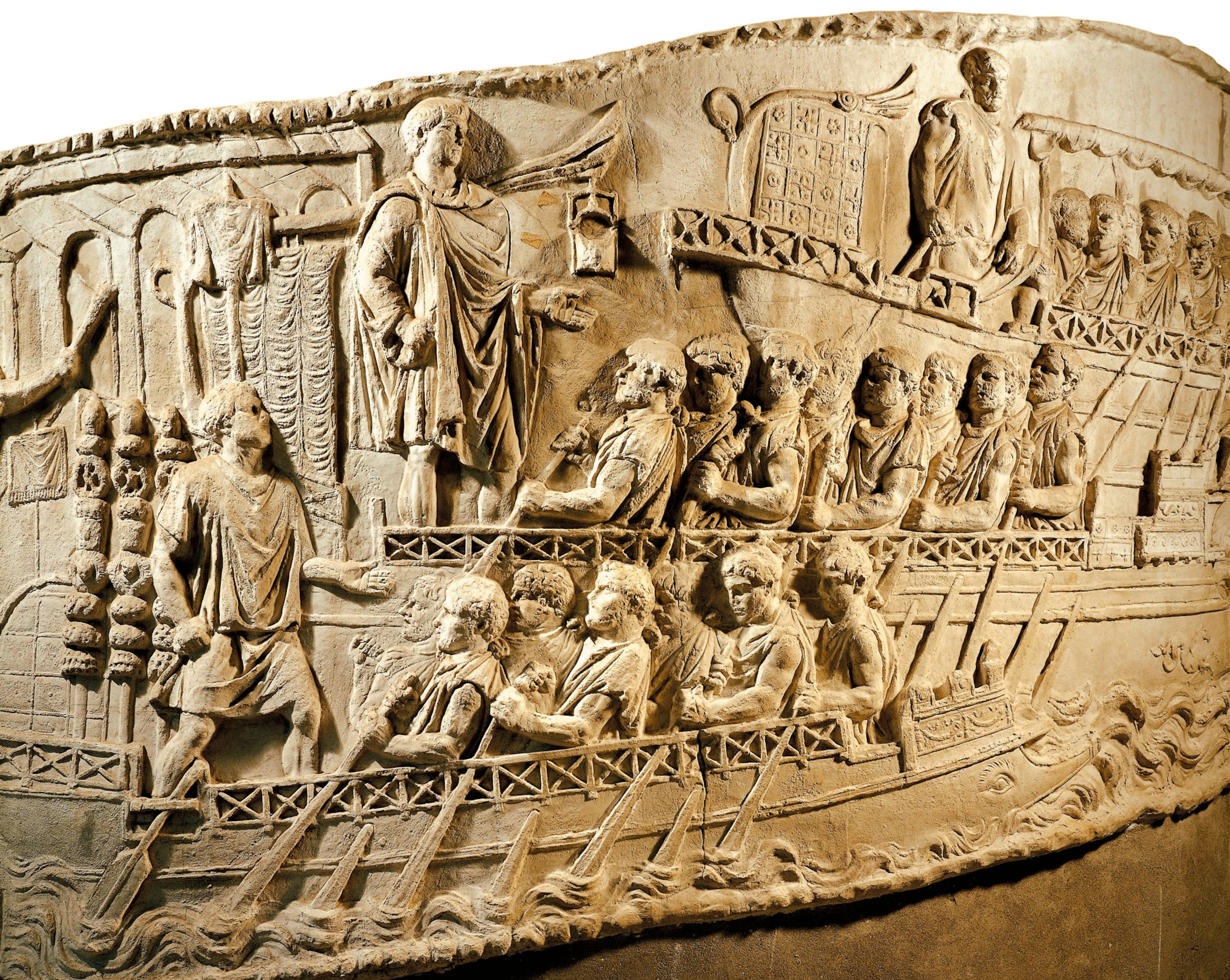
The two Roman fleets sailing the Danube performed the same functions on the river as the legions did on land: controlling the movements of people and goods, ensuring the collection of taxes, and moving frieight. The liburna was one type of warship used on the Danube, a light galley that mimicked the design of Illyrian pirate vessels. The most common types of freighters were the oneraria and the actuaria. Both these ships were crewed with a naval infantry comprising a mix of sailors (nautae) and oarsmen (remiges).
For protection, Rome relied first on the river’s width of 1,500 feet along much of its route as a natural defense. Augustus then added a border patrol, launching a fleet to secure the waterway. He built a series of forts, watchtowers, and signal stations to detect and contain an attack or call for reinforcements, which also served to monitor movements, regulate trade, and collect customs fees. This system, known as limes, originally meant a fortified military road. It came to signify a network of defensive installations—including walls, forts, and palisades—built by the Romans on the empire’s frontiers along the Danube as well as other locations. (Here's why Roman emperors staged epic, violent naval battles.)
The land between the legionary bases and the auxiliary forts was dotted with small forts and watchtowers. Along the Danube and the Rhine, there was much less construction of this type than has been documented on other fortified borders, such as Hadrian’s Wall in Britain. Although some forts have probably been lost due to erosion, it seems that the river’s considerable width was obstacle enough for any attacker. (Emperor Hadrian brought the world to Rome.)
The Augustan border strategy along the Danube was designed for maximum flexibility, seeking to maintain peace through a combination of security, trade, and diplomacy. Even something like granting coveted access to markets could involve an exchange for border security, adding a buffer against more hostile tribes farther from Rome. Favored tribes would win the right to move through the frontier more easily, providing they were in smaller groups and unarmed, while others could only sell wares at markets under armed guard.
Along the watchtower

Roman forces built towers along the Danube as an alarm system that sounded if barbarians began attacking. Typically built of stone, the watchtower (right) is surrounded by a palisade and has a gallery at the upper level. Stacks of firewood (left) could be lit to signal neighboring fortifications. Two haystacks (center) would provide food for horses.
Manning the forts
The Roman territorial army was divided into legions, each containing some 5,000 regular troops, plus auxiliaries. A main frontier base along the Danube could accommodate as many as 6,000 men, much larger than the villages and hamlets in the frontier zone. Within the legion there were different infantry, cavalry, and mixed units known as the cohortes and alae, each of which numbered between 500 and 1,000 men. The smallest detachments, or numeri, consisted of some 200 barbarian men who fought with their own equipment and customs rather than the Roman style.
The main bases were large complexes of some 50 acres and followed a rectangular site plan with rounded corners. The largest were the so-called castra, such as the Lauriacum on the Danube limes in Austria. They were comprised of a headquarters building, commander’s residence, barracks, barns, stables, warehouses, hospital, baths, and latrines. The castra were often accompanied by a settlement of local tribespeople outside the walls who ran businesses catering to the needs of the camp. (Roman 'gladiator school' discovered in Austria along the Danube.)
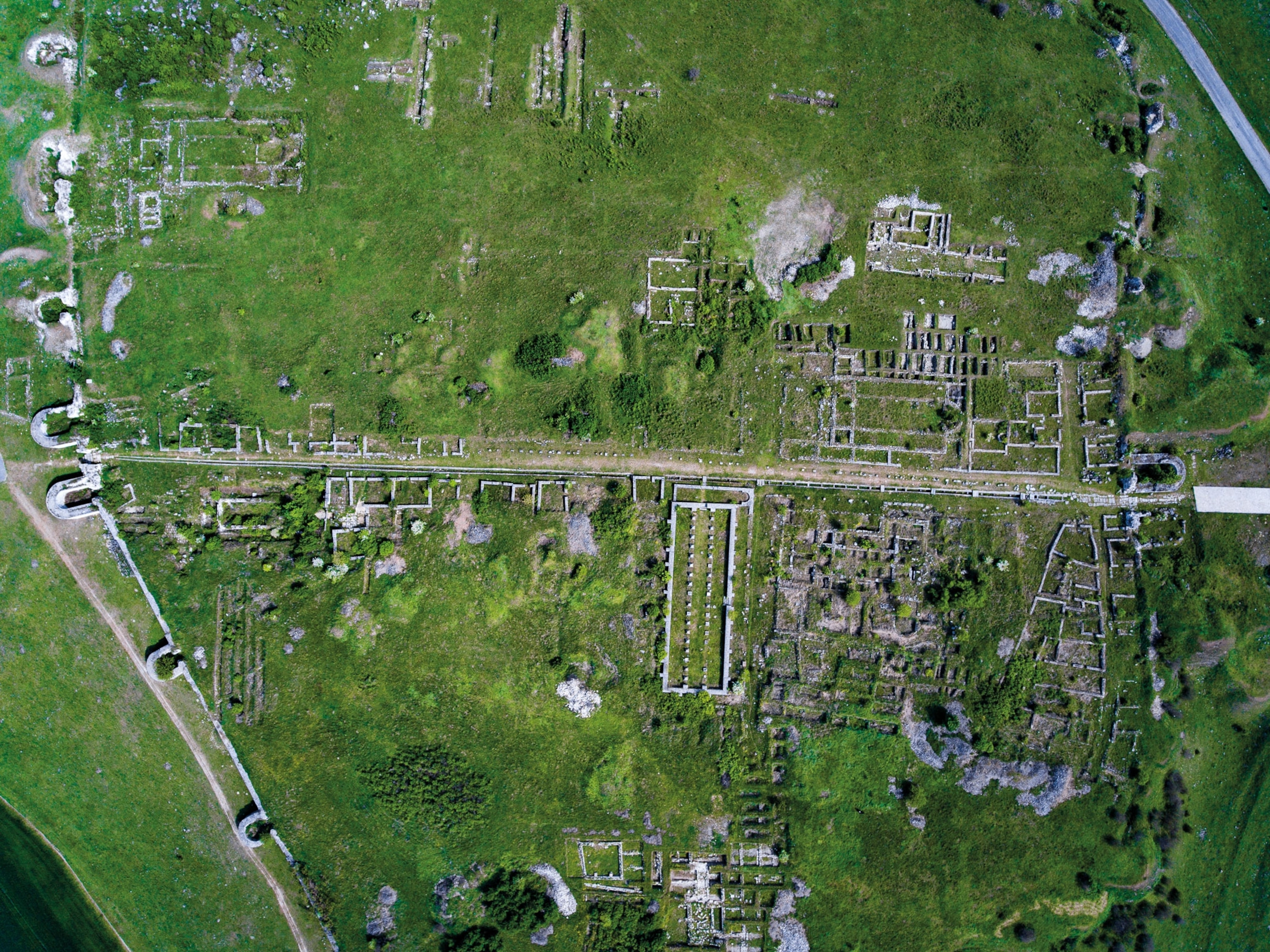
Smaller fortified settlements followed the same format as the castra, but were only about one-fifth the size and hosted just one cohort (or two, in exceptional cases). They had most of the same buildings as in the legionary bases, without the hospital and the baths. Small forts were occupied by cohort detachments and numeri. Along river borders like the Danube, all of these structures were arranged irregularly, depending on the river’s terrain.
A soldier’s daily life was organized into vigilia, the eight watches in a day that required rotating groups to stand guard in three-hour shifts. Training sessions were also on the agenda: Recruits had two each day, one in the morning and one in the afternoon, lasting the length of a watch, which included training in weapons use and horseback riding. Apart from the training, each soldier had a regular job. (An excavation reveals that Roman slingshots were as deadly as a .44 Magnum.)
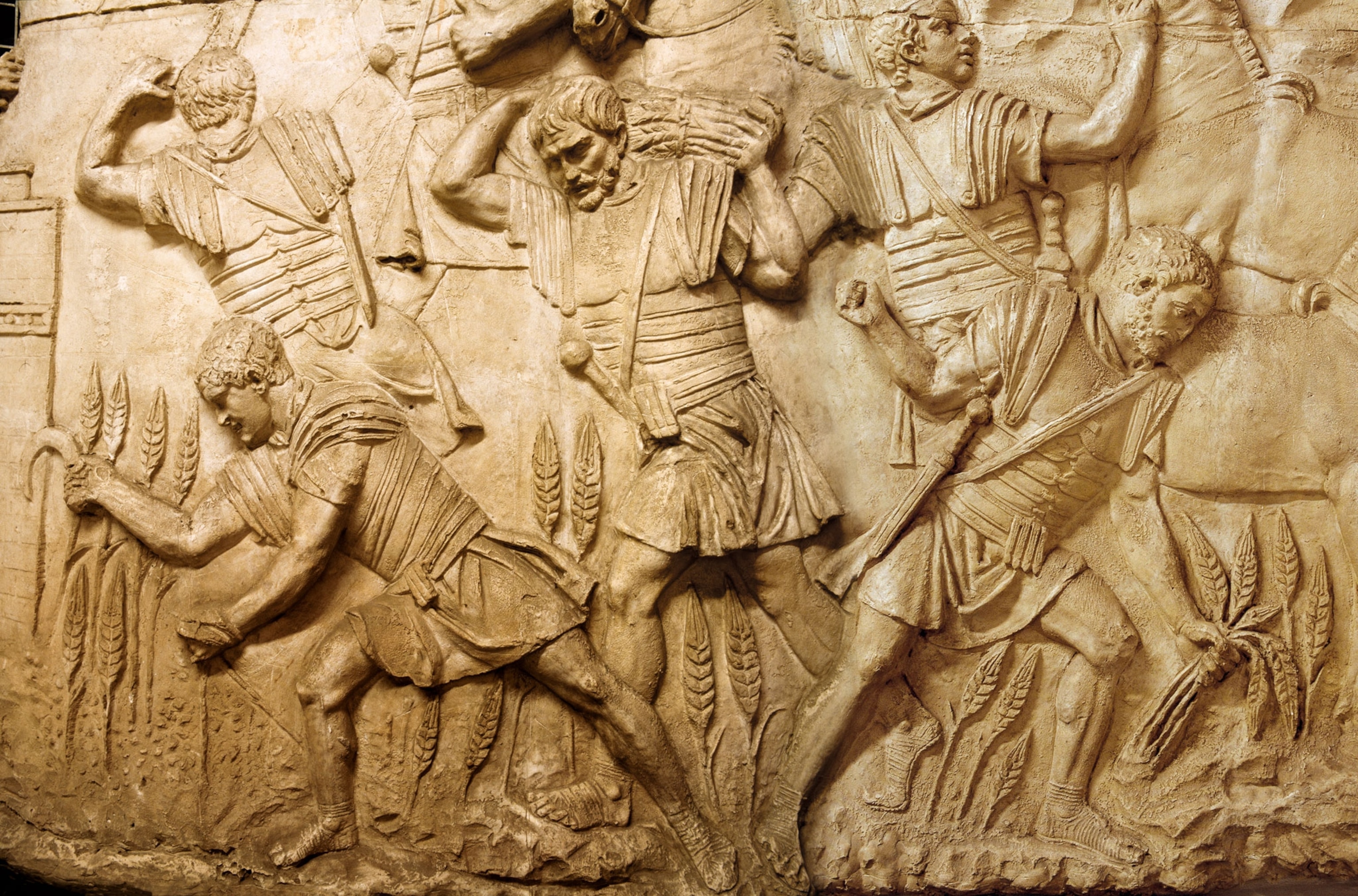
Special assignments could change a soldier’s routine too. A papyrus found in Egypt reveals activities carried out by soldiers in one auxiliary unit on the Danube in the early second century A.D. Some were engaged as bodyguards to imperial officials, two groups traveled to Gaul to procure clothes and cereals, while three others went north of the Danube—one to supervise crops, one to do reconnaissance, and another on an unspecified expedition.
Attacks on the border
For recruits who began their service on the Danube frontier, action was probably limited to the odd bandit attack or isolated barbarian incursion across the river for most of the first century A.D. But those who served in A.D. 85 would face the first of three Roman wars against the kingdom of Dacia (in what is Romania today), the strongest kingdom north of the Danube.
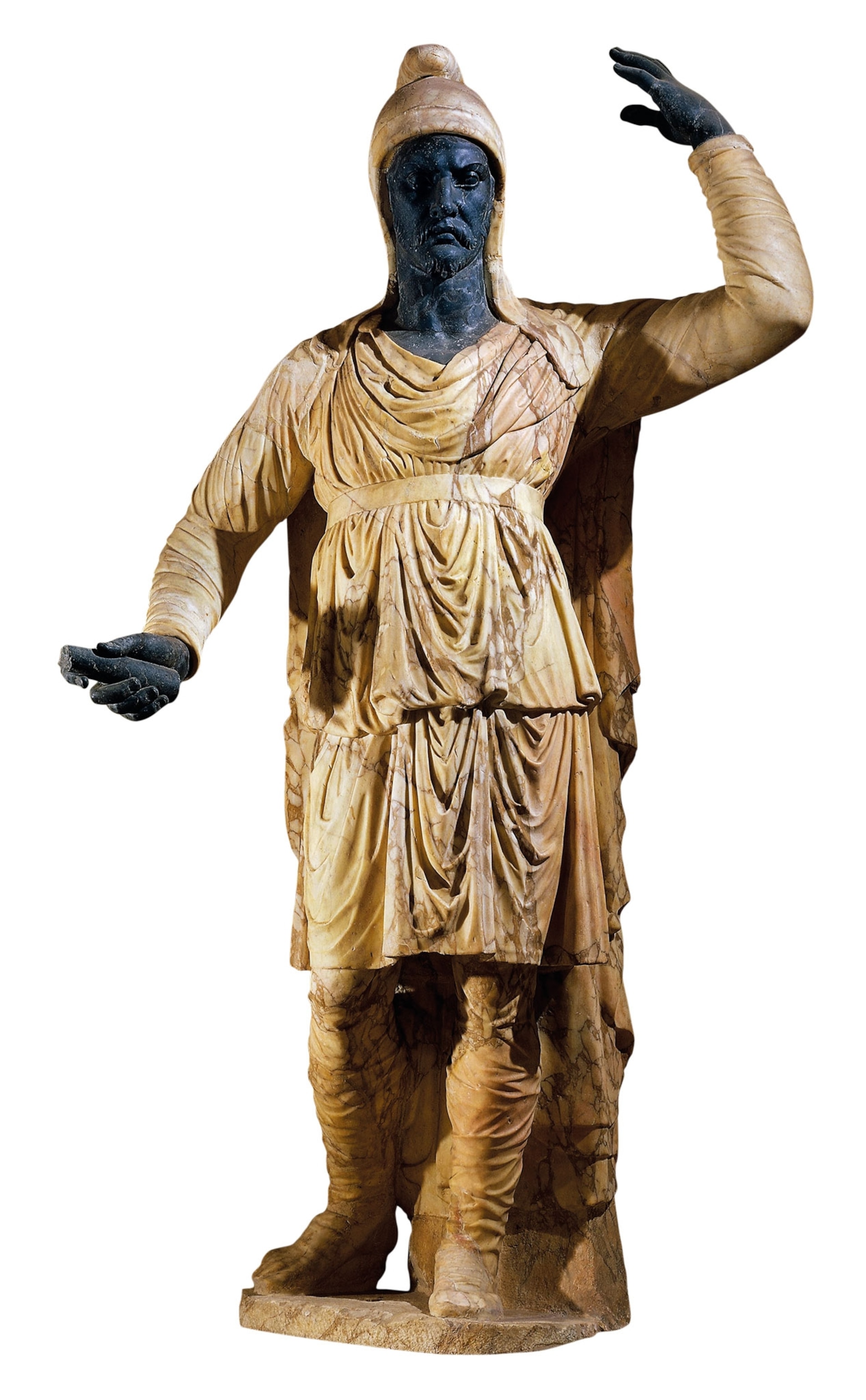
The Dacians had no written language, so much of what is known about them comes from the archaeological study of their settlements. Roman sources do provide accounts of Dacian culture, but their biases must be considered with a careful eye. (Tacitus warned that they were “a people which never can be trusted.”) The Dacians were a well-established regional power known for their fine metalwork and rich mines. Their forces would raid Roman frontier towns along the Danube, and Rome wanted to put a stop to it.
Led by King Decebalus, the Dacians attacked the Roman province of Moesia, located south of the Danube. They won two battles against the empire, but Emperor Domitian defeated them in A.D. 88. This conflict ended with peace rather than total defeat, and the Dacians continued to pose a threat to Rome’s holdings along the frontier.
Emperor Trajan, fought two separate wars against the Dacians. The first was fought 101-102. King Decebalus and Trajan formed a treaty, which the king then broke. In the second conflict, Trajan and his legions wiped out the Dacians. In a marvelous show of organization and engineering, Trajan’s forces built the first permanent bridge spanning the Danube to facilitate military supply lines. Tens of thousands of soldiers finished off the Dacians and reestablished Roman control along this portion of the Danube.
The spoils were brought back to Rome and used to build Trajan’s Column, a 126-foot-high monument that still stands in Trajan’s Forum in Rome. The column is covered with sculptural reliefs of 155 scenes that depict multiple aspects of Trajan’s campaigns. Roughly half of the scenes involve the Roman military, showing them marching, fighting, and making sacrifices. Their opponents, the Dacians, also appear and provide one of the best visual sources of how barbarians looked—their shaggy beards contrasting with clean-shaven Roman faces. Other panels show more practical concerns of daily life on the frontier: harvesting grain, clearing forests, and building forts. (Explore a digital reconstruction of the column.)
First crossing

An architectural wonder, Trajan’s Bridge was ordered built in A.D. 103 to secure rapid supply lines in Rome’s war against the Dacians. Completed in two years, it connected the Danube’s southern shore (modern-day Kladovo in Serbia) with the northern (modern-day Drobeta–Turnu Severin in Romania). Designed by Apollodorus of Damascus, the bridge was made of intricate wooden arches that stood atop stone piers. Rather than build short spans, which would have required more piers and taken too long, he devised a unique wooden arch solution. The bridge was demolished some 150 years later by Aurelian as he withdrew from Dacia. At over six-tenths of a mile, it was the longest span bridge built for more than 1,000 years. Twelve of the original 20 piers still exist, although all but two are underwater.
Becoming Roman
Trajan’s show of strength served as a warning to the other Germanic tribes along the river. During most of the next century, the frontier system fulfilled its function of guarding and regulating the borders, which in turn fostered deepening connections between Rome and the Germanic tribes who lived along the Danube.
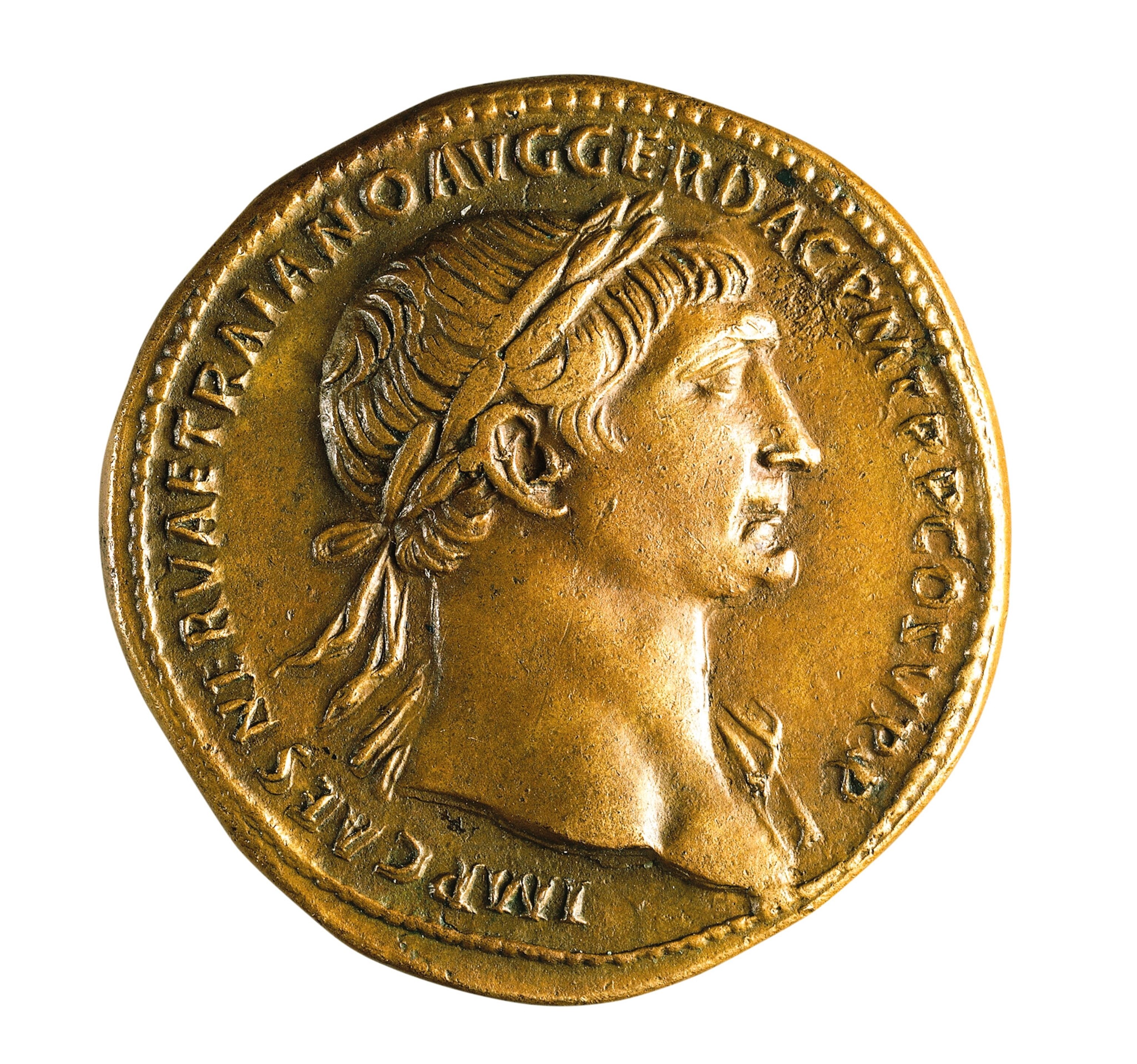
During the reign of Marcus Aurelius (starting in A.D. 161), state policy allowed increased numbers of barbarians (unarmed and in small groups) to cross the Danube and settle on vacant lands where they raised families, farmed, and paid taxes. Their sons could enlist in the Roman army, and their descendants would routinely rise to the high ranks of the military or the administration. Incorporating the Germanic tribes into Roman civilization was seen as a way to protect the empire by giving these former outsiders a stake in its continued success.

Roman policy toward immigration was constantly evolving, often contradictory but always guided by practicality. Tribes that were loathed on the one hand might eventually be candidates for Roman citizenship, a trait present since the empire’s early days. Tacitus quotes Emperor Claudius addressing the Senate in A.D. 48 in favor of letting in members of the Gallic aristocracy: “My ancestors encourage me to govern by the same policy of transferring to this city all conspicuous merit, wherever found.” The Danubian limes continued to function as the northern frontier. Subsequent sovereigns reinforced them with the construction of new fortifications. (Here's how Roman citizenship was a path to power for many.)
The empire began to weaken in the third century as Rome itself began to fall into chaos. Between A.D. 235 and 284, emperors reigned an average of 18 months. This instability drew Rome’s attention away from the frontier. The Visigoths (western Goths) took advantage and attacked Dacia in A.D. 270. Although Emperor Aurelian defeated the Visigoths, he surrendered the territory north of the Danube to them.
Meanwhile, smaller tribes of barbarians beyond the Danube and the Rhine had been forming mighty confederations: the southern Germans into the Alemanni and middle Rhine groups into the Franks. In A.D. 260 the Alemanni broke through northern limes established by Hadrian, forcing the Roman frontier back to the Danube and Rhine. The Danube limes fell into disrepair, and emperors tried to strengthen them in the 300s. When Rome fell a century later, the Danube limes would still be standing.

